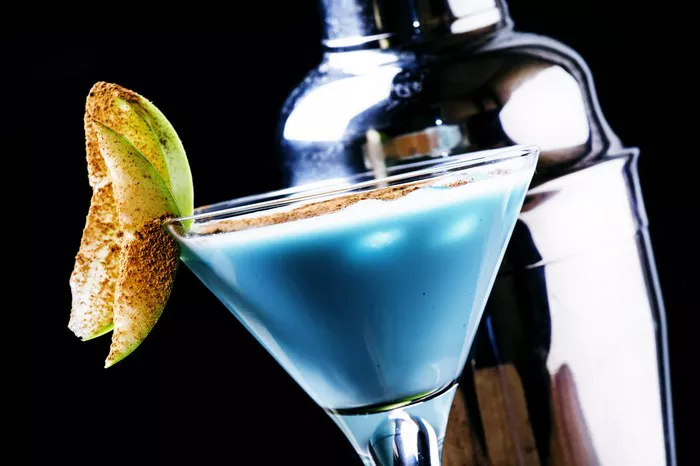In the world of cocktails, the Spritz stands as a refreshing and iconic drink that has captured the hearts of many. Originating in Italy, this effervescent cocktail has gained popularity worldwide for its vibrant flavors and easy-drinking nature. Whether enjoyed on a sunny terrace or as an aperitif before a meal, the Spritz is a versatile and delightful beverage. In this article, we’ll dive into the history and origins of the Spritz cocktail, the key ingredients that make it so distinctive, and how you can craft one at home. Get ready to embrace the spirit of la dolce vita with every sip of this beloved classic.
1. A Taste of Italy: Origins and History
The history of the Spritz cocktail can be traced back to the early 19th century in the Veneto region of northeastern Italy. The story goes that during the time of the Austro-Hungarian Empire, soldiers stationed in the region found Italian wines too strong for their taste. To mellow the wines, they began adding a splash of water, giving rise to the term “spritzen,” which means “to spray” in German.
Over the years, the drink evolved with the addition of soda water to further dilute the wine and create a more refreshing beverage. Eventually, the base spirit shifted from wine to Prosecco, an Italian sparkling wine, and the modern Spritz as we know it was born.
2. The Ingredients that Make the Spritz
One of the hallmarks of the Spritz cocktail is its simplicity, consisting of just a few key ingredients. The classic recipe calls for:
– Prosecco: Prosecco, a sparkling wine from Italy, forms the base of the Spritz. Its light and bubbly nature bring effervescence and a touch of sweetness to the cocktail.
– Aperol or Campari: Aperol and Campari are both bitter liqueurs commonly used in the Spritz. Aperol is known for its bright orange color and milder bitterness, while Campari has a deeper red hue and a more pronounced bitter flavor. The choice between the two liqueurs depends on personal preference and desired taste profile.
– Soda Water: Soda water, also known as sparkling water or club soda, provides the effervescence that makes the Spritz so refreshing. It balances the sweetness of the Prosecco and liqueur, resulting in a light and crisp cocktail.
– Orange Slice or Twist: The Spritz is typically garnished with a slice or twist of orange, adding a citrusy aroma and visual appeal to the drink.
3. Variations and Twists
While the classic Spritz recipe is beloved for its timeless appeal, mixologists and bartenders have embraced creativity by crafting variations and twists of the original. These variations often involve substituting or complementing the base ingredients to achieve different flavor profiles. Here are a few popular Spritz variations:
– Negroni Sbagliato: This variation swaps Prosecco for gin, resulting in a bubbly and less potent version of the classic Negroni cocktail. The name “Sbagliato” means “mistaken” in Italian, referring to the accidental substitution that led to the creation of this delightful twist.
– Hugo Spritz: The Hugo Spritz is a refreshing and floral variation that combines elderflower liqueur, Prosecco, soda water, and fresh mint leaves. The elderflower liqueur adds a delicate sweetness and aromatic essence to the drink.
– Americano: The Americano is an earlier predecessor of the Spritz, dating back to the 1860s. It features Campari, sweet vermouth, and soda water, served over ice with a lemon or orange twist.
– White Spritz: This elegant twist replaces Aperol or Campari with a white bitter liqueur, such as Select Aperitivo or Lillet Blanc. The result is a lighter and less bitter version of the classic Spritz.
– Rosé Spritz: For a rosier take on the Spritz, use rosé wine as the base instead of Prosecco. The rosé Spritz offers a blush hue and a slightly fruitier flavor profile.
– Elderflower Spritz: This variation uses elderflower liqueur as the main flavor component, complemented by Prosecco and soda water. It’s a delightful choice for those who enjoy floral and fragrant cocktails.
4. Serving and Enjoying the Spritz
The Spritz cocktail is traditionally served in a wine glass or a large balloon glass filled with ice. The use of a large glass allows for ample space for the Prosecco, soda water, and garnish, ensuring a well-balanced and visually appealing drink.
The classic garnish for the Spritz is an orange slice or twist, which adds a burst of citrus aroma and complements the liqueur’s flavors. Some variations may call for additional garnishes, such as fresh herbs or berries, to enhance the overall experience.
The Spritz is best enjoyed in a leisurely manner, sipped slowly to savor its effervescence and flavors. Its lower alcohol content and refreshing character make it a perfect choice for warm summer days, outdoor gatherings, and social occasions.
5. Aperitivo Culture and the Spritz
In Italy, the Spritz cocktail is closely associated with aperitivo culture—a cherished tradition of enjoying pre-dinner drinks with light snacks. Aperitivo is a time for socializing, unwinding, and stimulating the appetite before a meal.
In cities like Venice, Milan, and Florence, locals and visitors alike flock to bars and terraces during aperitivo hour to partake in this cherished ritual. The Spritz, with its light and inviting nature, has become an integral part of aperitivo culture, symbolizing the relaxed and convivial atmosphere of the Italian lifestyle.
Conclusion
The Spritz cocktail’s rise to prominence is a testament to its delightful combination of flavors and its embodiment of aperitivo culture. Whether you choose the classic recipe or venture into creative variations, the Spritz promises a refreshing and invigorating experience with every sip.
As you raise your glass and indulge in the effervescence of this beloved cocktail, let the spirit of la dolce vita transport you to the charming streets of Italy. Savor the moments of camaraderie and enjoyment that aperitivo hour brings, and celebrate the artistry of mixology with the timeless allure of the Spritz. Cheers!


